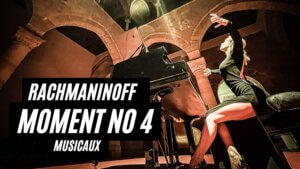Chopin Black Keys Etude Op. 10 No. 5: An Exercise in Light-Hearted Frivolity
Chopin Etude Op 10 No 5 is one of the most celebrated pieces from this renowned pianist and composer. Indeed, many consider this oeuvre to be exceedingly challenging even for advanced artists. However, this was not the reason that I decided to record the piece. Chopin Black Keys is instead a celebration of spontaneity and impulsiveness; a demonstration of charm alongside what I feel to be a slightly naughty nature. Even those who are not entirely familiar with this prolific artist will observe that Opus 10 No. 5 drastically differs from some of his more melancholic and even vitriolic nocturnes. Thus, I was immediately drawn to its melodic personality from the very beginning.
A Character Unto Itself

As a pianist, one of my intentions is to delve into the character of each individual piece; as if to breathe a new sense of life into a work that may be centuries old. However, I quickly learned that Chopin Black Keys had the exact opposite effect. Its sense of sonorous flirtation and its charming nature soon transported my fingers along those very same black keys. It were as if Chopin himself were taking me on a personal journey and I was a mere traveller along for the ride. I should still mention that there were indeed a few challenges which needed to be overcome. Much like the other works created by Chopin, it was necessary to find a delicate balance between frivolity and intention. The light-hearted nature of this piece would quickly be squandered had I failed to play it with an equal amount of tenderness and compassion. To me, this was the real trial. Technical proficiency is one thing. Playing such a song with the heartfelt emotion that matches its innate character is something entirely different.
[embedyt] https://www.youtube.com/watch?v=Ej8BZa0Q_74[/embedyt]
Chopin Black Keys: A Study in Arpeggios and Much More
Many believe that Chopin purposely wrote this piece with the intention of forcing the right hand to act as a counter to the left. Although some would argue that it appears more difficult to play than it actually is, balancing staccato chords against the vibrant nature of arpeggios is still quite challenging. However, the true lustre of this piece lies in between the notes; in the places where the untold facets of the mind fall in between the keys. The delicately cascading tones themselves sound much like raindrops dancing against a window pane. Their flowing beauty can only be captured after developing an innate knowledge of Chopin as well as the piece itself. In order to achieve beauty, one cannot exist without the other. This is why I am still carried away on waves of whimsical elegance every time I play Chopin Black Keys.



